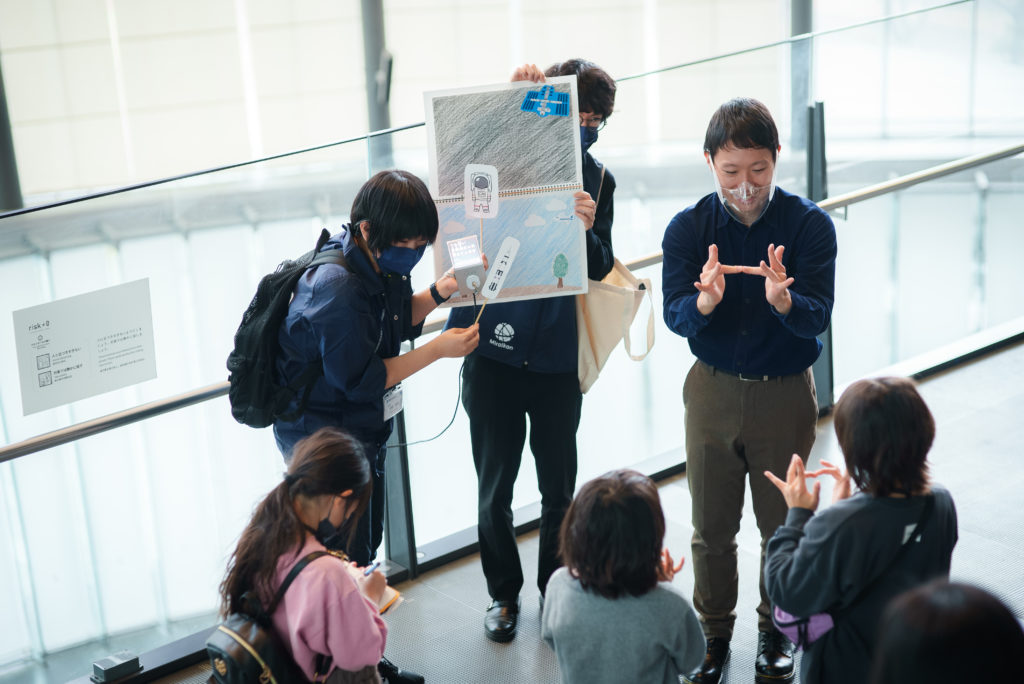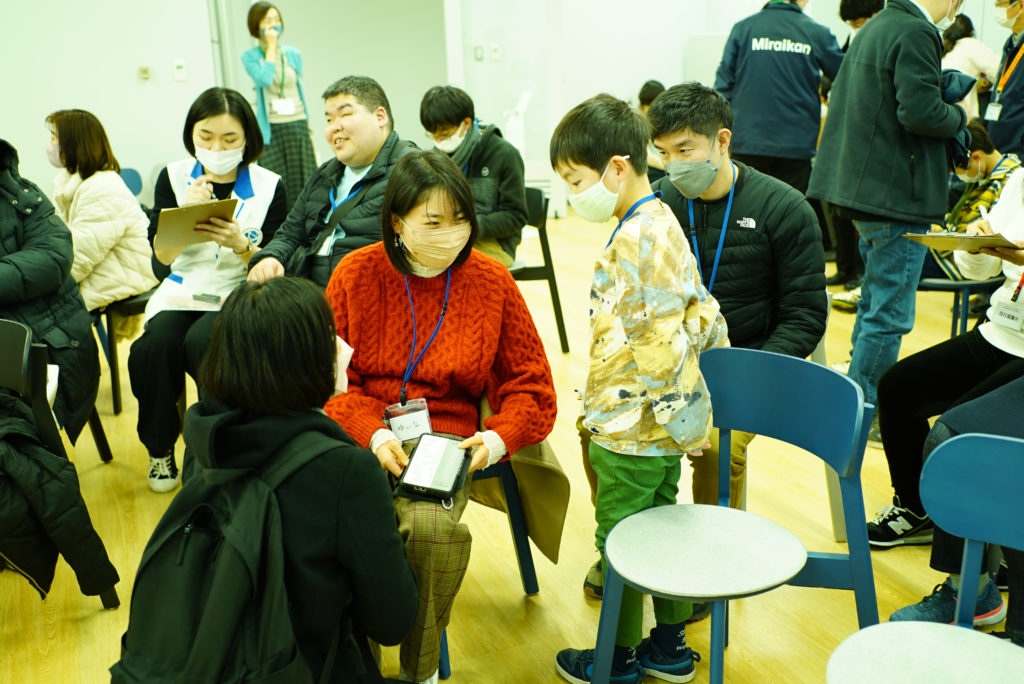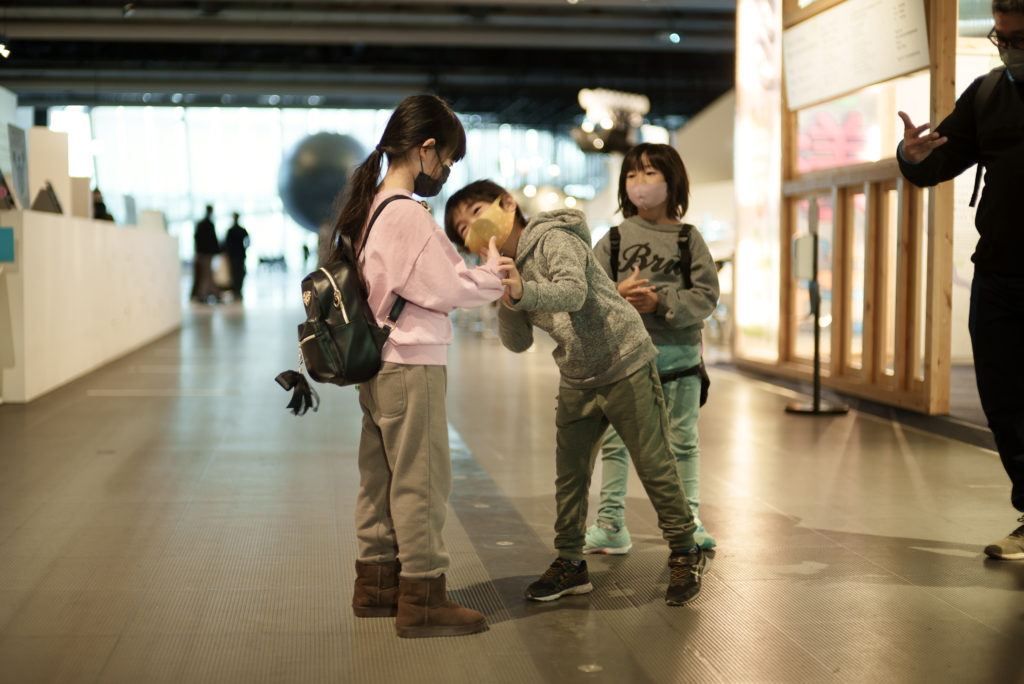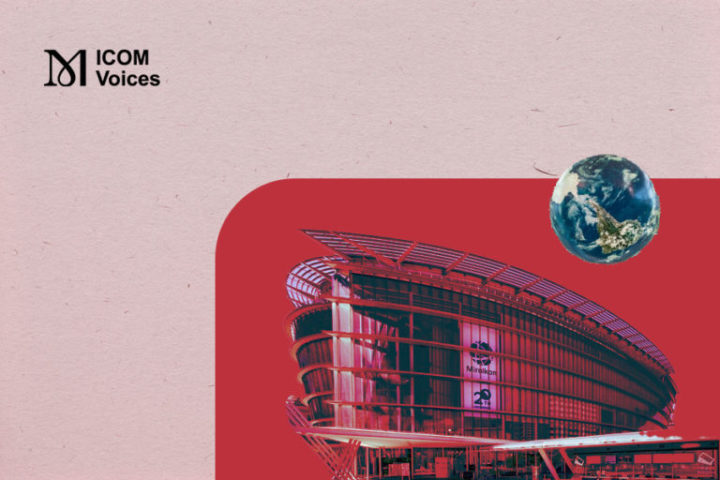
Akira OHKUBO
Science communicator at Miraikan - The National Museum of Emerging Science and Innovation, Japan
Museums have no borders,
they have a network
June 22, 2023
Keywords: accessibility, inclusion, diversity, communication, technology
Miraikan toward an accessible museum
Diverse groups of people visit Miraikan, a national science museum in Japan, and see the latest scientific breakthroughs and cutting-edge technologies. Miraikan – which means “house of futures” in Japanese – aims to be an open platform where everyone can contribute to creating a brighter future. Improving museum accessibility is essential to truly include everyone in this process, no matter the nationality, no matter cultural background, no matter the physical features and more.
As an in-house science communicator, serving as a bridge between science and society, my main role is to tackle this challenge. In this article, I share what my colleagues and I have learned by developing accessible museum programs.
Designing a visual guided tour with deaf and hard of hearing visitors

Fig. 1. See Through Captions: a handy transparent display that converts spoken words to texts in real-time. © xDiversity
Miraikan hosts research laboratories run by external researchers. One of them, the xDiversity project, developed real-time caption display named See Through Captions (Fig. 1.). This technological tool converts spoken words into texts that quickly appear on a display. The facial expressions of the user, another key element of communication, can also be seen through the transparent screen (Fig. 1.). This device inspired us to design a visual guided tour for deaf and hard of hearing visitors in collaboration with the research team.
However, establishing an effective communication channel didn’t happen overnight. We quickly learned how challenging it is to fine-tune the way we speak to the device. Here is an example: Let’s say you wish to introduce an exhibit behind you. To do so, you may say something like this, pointing to the exhibit, “I will introduce that exhibit to you”. But participants told us that what the word “that” specifically indicates is unclear since they are looking at the words shown on the display. They cannot see the gesture that specifies where “that” direction is at the same time.
This is how we adapted: first, the guide says “I will introduce you to an exhibit behind me”. He waits to ensure all participants have finished reading what he said, then points at the exhibit. Seeing things through the attendees’ eyes allowed us to adjust this tool in order to visually communicate better.

Fig. 2. A scene from the visual guided tour, where the guides, the translator and participants interact with each other. © Miraikan – The National Museum of Emerging Science and Innovation & xDiversity
We keep developing the tour with participants and professionals. For example, a Japanese Sign Language (JSL) interpreter is now helping us with the tours (Fig. 2.). He mainly helps deaf children who have JSL as their first language and Japanese as a second language, this is because we noticed that it is challenging for children to read Japanese on the display tool. This also allows all participants to enjoy the tour either in JSL, or in written Japanese. They can express their thoughts by different means: writing, drawing, or signing (Fig. 2.). An illustrated storyboard (Fig. 2.) is also sometimes used by guides to help attendees (especially deaf children) to visualize what is being explained.
This is an ongoing process and we will keep developing the tour. It is important to emphasize that we always work on improving accessibility together with the people involved.
This work enabled us to extend our network to the deaf and hard of hearing communities. We have thus organised school trips for deaf school students and created a museum video guide in JSL.
Accessibility measures also benefit “others”
Our developments to improve accessibility for deaf and hard of hearing visitors are also beneficial for visitors who can hear. For example, during a visit for deaf and hard of hearing people, the tour guide needs to convey a message using few and short words, since the number of words that can appear on the small, 4 inch-sized display is limited (Fig. 1.). This helps to create a concise tour script, which is more easily understandable by all. Learning this encouraged us to offer the tour to hearing visitors as well. This is a key to our mission: making museum experiences open to, and enjoyable for everyone.
Including many different people made the tour even more meaningful. A participant stated that “attending the tour helped my son, who has dysgraphia, to discover written text is only one among other diverse communication manners”.

Fig. 3. A scene from the event “Is a friendly city for you also friendly for everyone?”. A little boy asking a blind participant what she is using (which is a braille notetaker). © Miraikan – The National Museum of Emerging Science and Innovation
This experience encouraged us to organise an additional open event this year, entitled “Is a friendly city for you also friendly for everyone?”. The reason we selected ‘friendliness’ as the theme, is that no one, and at the same time everyone, is an expert in friendliness since each person can decide what friendly is for them.
We, in turn, did everything we could do to make this event as ‘friendly’ as possible. This included asking participants to always say their name before they speak (otherwise blind people may misunderstand who’s speaking) and to use words that are easy to understand (otherwise non-native speakers and children may get lost). We also offered speech-to-text tools.
Among the audience were children, hard of hearing people, people of short stature and blind and partially sighted people. This diverse group highlighted that it is impossible to find a simple solution that makes a city friendly for all. What is ‘friendly’ to some might not be friendly to others (e.g. elevators are not ‘friendly’ for claustrophobic people but are essential for wheelchair users). Working toward a truly inclusive and diverse society requires facing, appreciating and understanding this complexity, which challenges us to be better. Technology has the potential to help with these challenges when it is developed with the wellbeing of society in mind.

Fig. 4. Visual guided tour, where a deaf boy teaches how to count numbers in JSL to a hearing girl. © Miraikan – The National Museum of Emerging Science and Innovation & xDiversity
One way in which I think museums can play a role in this, is illustrated beautifully in the photo above, taken after one of our guided tours. The hearing girl on the left and the deaf boy (and his sister) on the right became friends by participating in the same tour. The deaf boy started to teach the hearing girl how to count numbers in JSL. In the end, they left to explore the exhibits together. This scene of respectful communication inspired me. Making new friends and discovering different cultures are perhaps one of the most meaningful things a museum can offer. I believe that by improving accessibility, Miraikan, and potentially any museum, can become a place for everyone to make discoveries, or to create a brighter future.
Reference:
https://www.miraikan.jst.go.jp/en/
